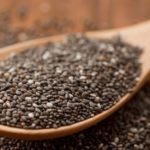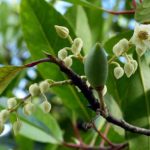1 What are Matcha and Green Tea Powder?
What is Green Tea Powder? Its Origin and Distinctive Features
Green tea powder is made from tea leaves that are ground into a fine powder. Instead of infusing the leaves in hot water as with traditional tea brewing, green tea powder is whisked with hot water and consumed with the tea leaves. This method of consumption offers enhanced health benefits.
Green tea powder is produced by grinding young tea leaves (70%) and tea buds (30%) without any complex processing. It involves only plucking, drying, and grinding the tea leaves.
Green tea powder was created by Eisa, a Japanese Zen Buddhist monk and the founder of the Rinzai school of Zen Buddhism.
Historically, green tea was cultivated in China, and its cultivation and consumption gradually spread to Japan. At that time, green tea was considered a precious beverage, accessible only to monks and the imperial family.
Later, Eisai also introduced the health benefits, uses, and influence of green tea to the common people and samurai warriors.

In the late 12th century, Eisa introduced the way of preparing green tea powder in “tencha” (the art of tea preparation). The tea leaves were ground into a fine powder, placed in a bowl, and hot water was poured over it. It was then whisked with a brush until the powder dissolved in the water. After returning from China to Japan, he brought tea seeds and propagated them throughout Japan.
What is Matcha? Its Origin and Distinctive Features
Matcha is made from 100% young tea buds and undergoes a special production process. The newly sprouted buds are shade-grown, harvested, steamed, and dried with wind to remove the leaf veins. Finally, they are ground into a fine, bright green powder.

Matcha is made from 100% young tea buds that are plucked early in the morning, carefully ground into a fine powder, dried, and then sieved to remove any remaining leaf veins. Because the leaf veins are removed, matcha dissolves completely in water.
In terms of nutritional value, matcha has a much higher nutritional content than green tea powder.
Origin of Matcha
Matcha originated in China but was brought to Japan by Zen monks, who refined and improved its quality to what we know as matcha today.
High-quality matcha is available, but it is typically accessible only to the upper echelons of society.
2 Distinguishing Matcha from Green Tea Powder
Green Tea Powder

-
Main ingredient: 70% young tea leaves and 30% tea buds. The leaves are plucked, dried, and ground industrially.
-
Coarse powder due to the presence of leaf veins.
-
Color: Dark green, sometimes with a yellowish tinge, and a coarse, uneven texture.
-
Does not dissolve in water, resulting in a bitter taste without a sweet aroma.
-
Low nutritional content.
-
Inexpensive, with prices ranging from 700,000 VND/kg.
Matcha

-
Main ingredient: 100% tea buds, which are plucked, steamed, dried, vein-removed, and finely ground.
-
Superfine, soft, and lightweight powder.
-
Color: Bright, even green with a soft and fine texture.
-
Completely dissolves in water, offering a bitter-sweet taste with a pleasant aroma.
-
Some manufacturers add seaweed to matcha, increasing its nutritional content by up to seven times compared to regular green tea powder.
-
Priced higher, ranging from 1,600,000 VND to under 6,000,000 VND/kg, depending on the tea’s quality and ingredients.
Note: Do not compromise on quality when purchasing matcha. Cheap matcha may be of inferior quality or even a counterfeit product. Genuine matcha is usually carefully produced and undergoes strict processing, justifying its higher price.
 Green Tea Powder (left) and Matcha (right)
Green Tea Powder (left) and Matcha (right)
Essentially, both matcha and green tea powder are derived from the same plant—the Camellia sinensis plant. However, while all matcha is a type of green tea powder, not all green tea powder is matcha.
It is important not to assume that matcha is inherently superior or offers more health benefits than green tea powder. Depending on your intended use, consider your options carefully to make an informed decision and avoid unnecessary waste.

With the wide availability of both matcha and green tea powder on the market, it is essential to be discerning when choosing a quality product. Additionally, beware of counterfeit matcha, as low-quality green tea powder is often passed off as premium matcha. Knowing how to identify genuine matcha will give you peace of mind when making a purchase.
3 How to Use Matcha and Green Tea Powder

Using Matcha
Matcha’s vibrant green color, natural sweetness, and complete solubility in water make it a popular choice for culinary applications. It can be used in baking, ice cream making, and beverage preparation.
Using Green Tea Powder
Green tea powder has antibacterial properties and is excellent for skin care. If you plan to use green tea powder in cooking, it is recommended to sift the powder to ensure a fine texture.
Using in Food Preparation




Using in Beauty Routines
Here are some ways to incorporate green tea powder into your beauty routine:
–
–
–
4 Benefits of Matcha and Green Tea Powder
Benefits of Matcha
Matcha offers numerous health benefits:
- Anti-aging properties
- Cancer prevention
- Mental relaxation
- Immune system boost
- Improved digestion
Benefits of Green Tea Powder
- Powerful antioxidant properties
- Cancer prevention
- Improved heart health
- Increased longevity
- Weight loss aid
- Stronger bones
- Anti-aging effects
- Memory enhancement






































